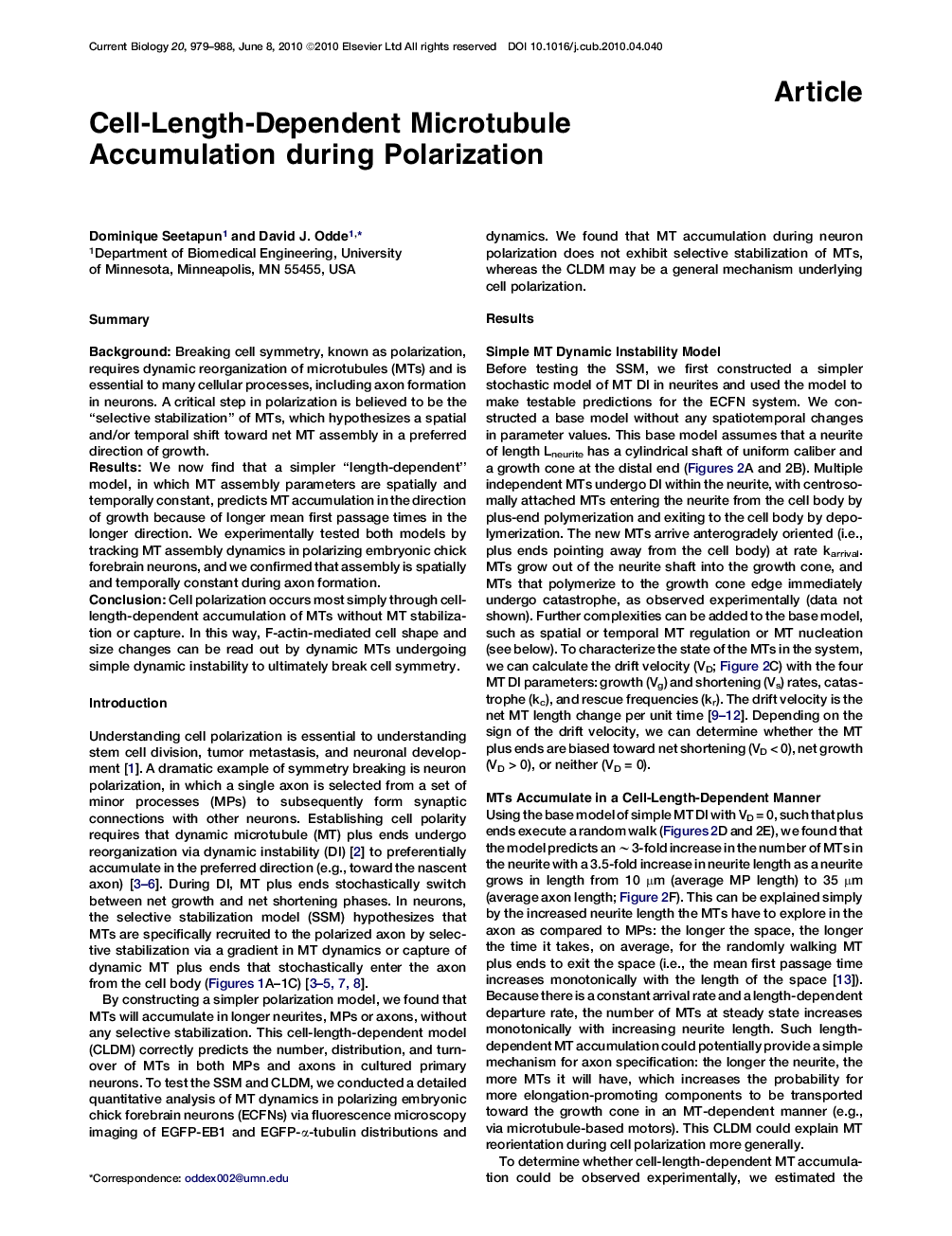| Article ID | Journal | Published Year | Pages | File Type |
|---|---|---|---|---|
| 2042981 | Current Biology | 2010 | 10 Pages |
SummaryBackgroundBreaking cell symmetry, known as polarization, requires dynamic reorganization of microtubules (MTs) and is essential to many cellular processes, including axon formation in neurons. A critical step in polarization is believed to be the “selective stabilization” of MTs, which hypothesizes a spatial and/or temporal shift toward net MT assembly in a preferred direction of growth.ResultsWe now find that a simpler “length-dependent” model, in which MT assembly parameters are spatially and temporally constant, predicts MT accumulation in the direction of growth because of longer mean first passage times in the longer direction. We experimentally tested both models by tracking MT assembly dynamics in polarizing embryonic chick forebrain neurons, and we confirmed that assembly is spatially and temporally constant during axon formation.ConclusionCell polarization occurs most simply through cell-length-dependent accumulation of MTs without MT stabilization or capture. In this way, F-actin-mediated cell shape and size changes can be read out by dynamic MTs undergoing simple dynamic instability to ultimately break cell symmetry.
► Microtubules accumulate in cellular extensions in proportion to extension length ► In polarizing neurons, microtubules remain dynamic and are not stabilized ► Cell-length-dependent microtubule accumulation may underlie cell polarization
